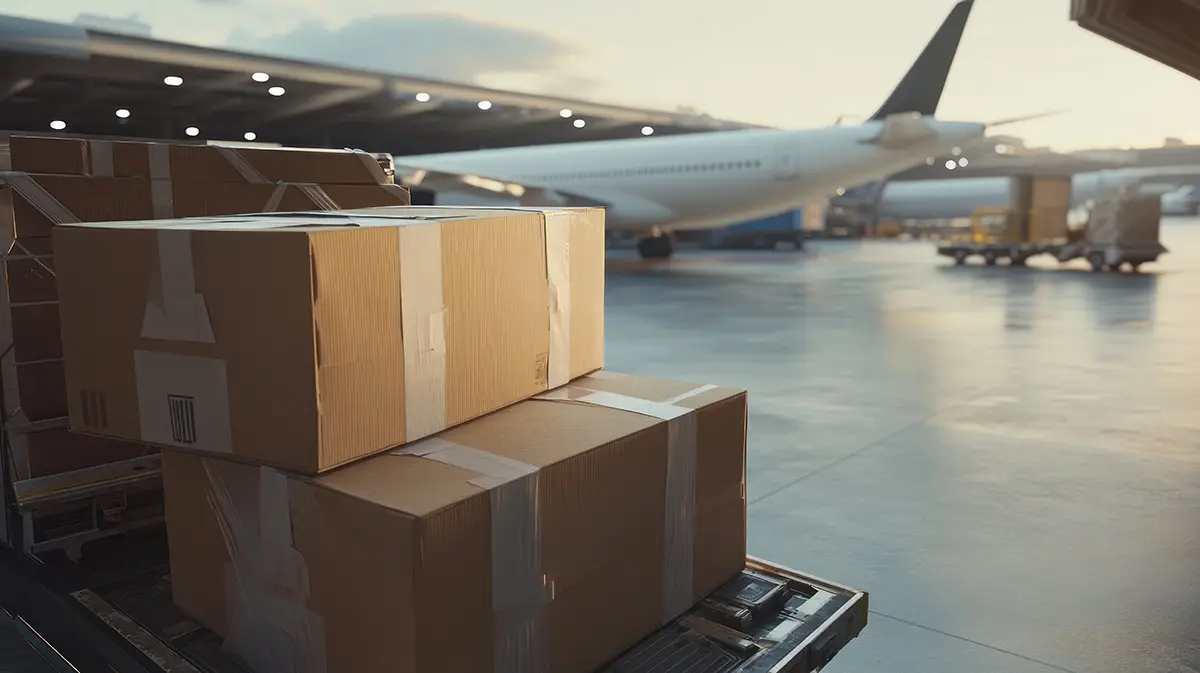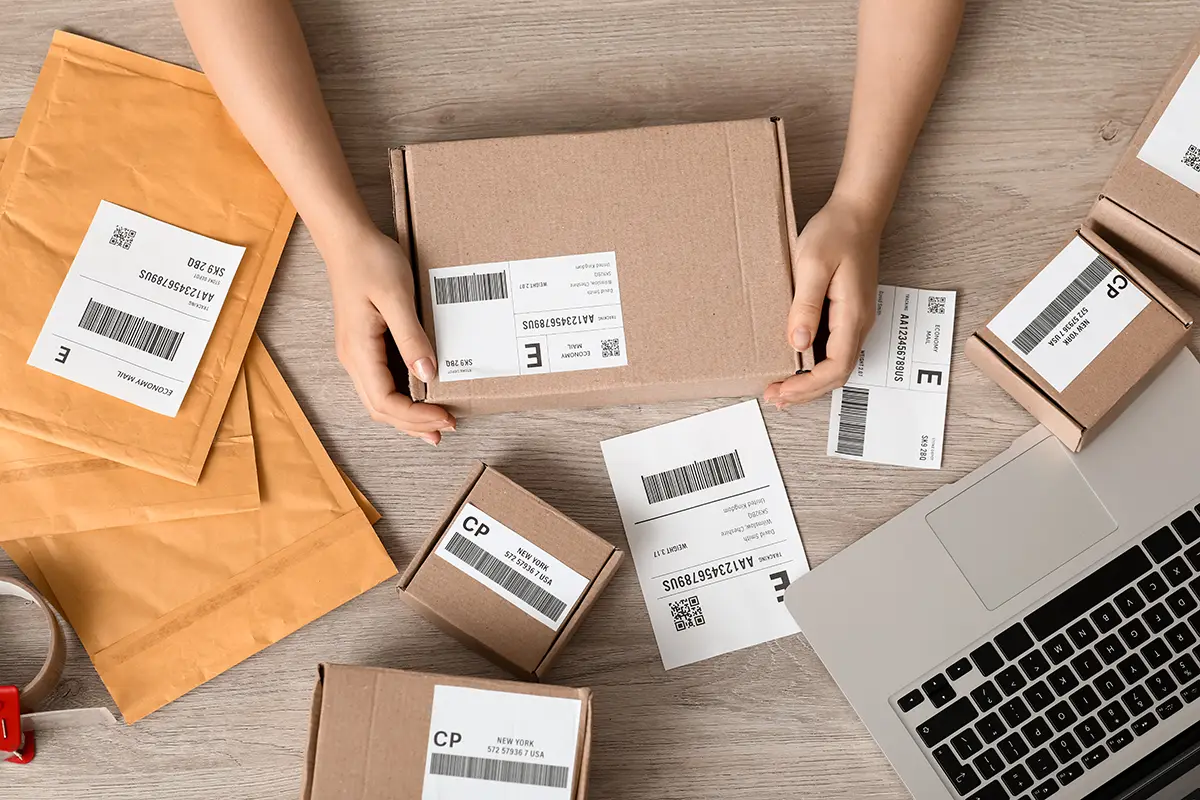Table of Contents
- Rookie Shipping Mistakes
- Intro to Multi-Carrier Shipping Software
- Five Tips for Shipping Internationally
- How to Get Started
- Discounted International Shipping Rates
- Key Takeaways
How to ship internationally—an ecommerce entrepreneur’s next frontier. Broadening your sales horizons and exploring international markets is an exciting prospect! This marks a new chapter in your online business’s story, so let’s get you off to a good start.
International shipping can sometimes feel intimidating and complicated, especially when you’re learning something new. Luckily, there are practical ways to simplify the process and make global ecommerce shipping possible for entrepreneurs.
What are the most common rookie shipping mistakes?

Not to scare you, but new international shippers commonly make mistakes that cost time, money, and headaches. Like anything new, shipping internationally comes with risks, and it’s important to understand potential pitfalls so you can avoid them. The good news is that these five rookie mistakes can be easily avoided by using a few shipping tips and multi-carrier shipping software for international package shipping.
5 Rookie Mistakes for International Package Shipping:
International parcel shipping is similar to domestic in many ways. The main difference is that packages often travel greater distances and are handled more, plus they pass through customs inspections as they enter the destination country. These factors affect the time and cost of shipping.
Here are five of the most common mistakes we see new international shippers make, along with quick tips on how to avoid them. We cover each issue in greater detail below. You can click the blue text to skip ahead to a specific topic.
- Not accounting for transit delays – Add an extra 1-2 days to the delivery date.
- Inaccurate product descriptions – Match descriptions to the HS code wording.
- Underestimating shipping costs – Research duties, taxes, fees, and currency.
- Improper packaging for transit – Choose the right package type and smallest size.
- Not keeping up with changing regulations – Use shipping software with updates.
To prevent these mistakes, many shippers rely on multi-carrier shipping software. Let’s take a look at this technology and how it simplifies international shipping.
What is multi-carrier shipping software for international package shipping?
Multi-carrier shipping software is commonly a cloud-based tool used by businesses to simplify the complex processes of shipping parcels around the world. International parcel shipping solutions may offer features to help shippers:
– Find the right HS codes to meet requirements
– Fill and file the required customs documents
– Rate shop to find the best discounted rates
– Print discounted international shipping labels
– Track international shipments
– Automate time-consuming shipping tasks
When you use a multi-carrier parcel shipping solution, technology removes much of the guesswork and helps to prevent costly mistakes. As we go through five tips for how to ship internationally, you’ll see how to put this type of software to work for your business.
5 tips for how to ship internationally

Though experience is the best teacher, smart shippers can save a lot of time, headaches, and money by following these best practices from the beginning. Here are five tips to avoid rookie mistakes when shipping internationally.
Tip 1: Add an extra 1-2 days to the delivery date.
Rookie mistake: not accounting for transit delays
Underestimating transit delays can cause you to overpromise on the delivery speed, then miss the deadline and damage the relationship with your customers.
International shipping includes customs clearance, which can significantly impact transit times. Every package passes through an inspection process to make sure all the customs requirements are met, the package is safe, and the correct duties, taxes, and fees are applied.
Some countries are pickier than others, and relationship differences between nations may cause closer scrutiny of packages. You should also consider holidays, last-mile delivery challenges, and seasonal weather that could influence how long a package takes to arrive.
How to avoid this issue:
When you first start shipping to a new country, always add a day or two to the transit time the carrier gives you. For example, if FedEx says your package will arrive in Mexico in three days, tell your customer they are getting 3–5-day shipping.
This helps to prevent disappointment by controlling two important factors: your customer’s expectations and your communication with the customer about their order. Providing tracking information also helps the customer know what to expect.
Also, consider adjusting your promised delivery date according to seasonality (weather, holidays, etc.), sociopolitical factors (i.e., war, protests), and other country-specific issues that can impact final mile delivery times. When in doubt, build in more transit time.
After you’ve been shipping to that country for a while, you can gauge whether the buffer is necessary or not. Some countries may regularly experience transit delays while others rarely do. You can adjust your shipping strategy as you go.
Tip 2: Match descriptions to the HS code wording.

Rookie mistake: inaccurate product descriptions
Speaking of transit delays, inaccurate product descriptions are one of the biggest causes of customs clearance problems. Customs documents like commercial invoices require a detailed written description of each item in the package.
Many new international shippers make the mistake of being too vague in the product description or not accurately describing everything that’s in the package. Why is this a big deal? Countries base their duties, taxes, and fees on those descriptions and HS codes.
There’s more to HS classification, but this is a good place to start: An international system called the Harmonized System (HS) assigns 6-digit codes to different types of goods. There are about 5,000 HS codes available globally, and it matters which one you use to classify your goods when shipping internationally.
If Customs decides a product is not described accurately, they may reject it and send it back to you (charging you for the return) and require you to re-ship with a better description. Or they may throw it away or assign a different HS code with higher taxes that will cost you or your customer more money.
How to avoid this issue:
The first step is understanding the details of your own products and finding the correct HS codes. The more specific your product descriptions, the better a chance your package has of making it to the customer by the promised delivery deadline.
For example, there are specific codes for different types of shoes, and certain types have a detailed description based on what the shoe is made of, who it’s for, how much it’s worth, and what it will be used for:
“9902.14.07 – Work footwear for women, with outer soles and uppers of rubber or plastics, not covering the ankle (provided for in subheading 6402.99.31), the foregoing other than house slippers and other than tennis shoes, basketball shoes, gym shoes, training shoes and the like.” Source.
The good news is that some international shipping software has HS code lookup built in to make this easy. Just start typing “shoes,” and different HS code options will pop up so you can find the right one. Then, use the same copy for your product description.
Tip 3: Research duties, taxes, fees, and currency.

Rookie mistake: underestimating shipping costs
International shipping costs are different than domestic shipping because you must also account for duties, taxes, and fees. Each country has its own system, and it’s important to research ahead of time so you and your customers fully understand the charges.
Also, some countries, such as Australia and New Zealand, require customs documents to be in their own currency. If you use the USD amount, the customer ends up with an unpleasant surprise and has to pay more in taxes later. It’s important to make sure the commercial invoice prints in the destination country currency, not USD, for those that require it.
How to avoid this issue:
Use an online international shipping calculator to estimate duties, taxes, and fees for your destination country. Then, communicate those charges to the customer ahead of time so there are no surprises when the bill comes in.
You can determine who will pay duties, taxes, and fees for international shipments (you or your customer?) in advance and write it into your shipping policy for international orders. It doesn’t necessarily matter who pays for it as long as everyone knows about it and agrees. We go more into detail about this in the article “How to Overcome the Expense of International Shipping for Shopify Orders.”
For the commercial invoice and required currency for different countries, we recommend that you use international shipping software that automatically converts the currency to the destination country. Descartes XPS is one solution that can do this for you.
Tip 4: Choose the right package type and smallest size.

Rookie mistake: improper packaging for transit
It goes without saying that international shipments often travel longer distances and require more handling than domestic packages. Many new international shippers assume their normal packaging will work just fine for global shipping.
Unfortunately, international shipments are more prone to damage and are also subject to environmental factors and local regulations. That means sometimes your normal packaging materials are insufficient to help your order reach the destination in one piece (or at all).
Humidity, temperature, and climate zones can affect packaging. Additionally, some countries require wooden packaging to be fumigated, dictate that all packaging must be recyclable, or even demand that shippers use organic packing materials.
How to avoid this issue:
Research packaging regulations and special requirements for your destination country and purchase appropriate shipping supplies. Remember, you don’t have to use these for domestic shipments if they are more expensive—just keep them in a designated area.
Test the durability of your product and packaging by beating it up a little bit. If you know you’re shipping to a high-humidity zone or freezing weather, test those conditions ahead of time and adjust your packaging accordingly.
When choosing packaging sizes, go with the smallest, tightest package that will provide enough protection for your product. By eliminating empty space inside the package, you will prevent things from bouncing around during transit. You’ll also save on smaller dimensions.
Tip 5: Use shipping software that stays up to date.

Rookie mistake: improper packaging for transit
It goes without saying that international shipments often travel longer distances and require more handling than domestic packages. Many new international shippers assume their normal packaging will work just fine for global shipping.
Unfortunately, international shipments are more prone to damage and are also subject to environmental factors and local regulations. That means sometimes your normal packaging materials are insufficient to help your order reach the destination in one piece (or at all).
Humidity, temperature, and climate zones can affect packaging. Additionally, some countries require wooden packaging to be fumigated, dictate that all packaging must be recyclable, or even demand that shippers use organic packing materials.
How to avoid this issue:
Research packaging regulations and special requirements for your destination country and purchase appropriate shipping supplies. Remember, you don’t have to use these for domestic shipments if they are more expensive—just keep them in a designated area.
Test the durability of your product and packaging by beating it up a little bit. If you know you’re shipping to a high-humidity zone or freezing weather, test those conditions ahead of time and adjust your packaging accordingly.
When choosing packaging sizes, go with the smallest, tightest package that will provide enough protection for your product. By eliminating empty space inside the package, you will prevent things from bouncing around during transit. You’ll also save on smaller dimensions.
How can I get started with international shipping?

As you blaze the trail into international sales and ecommerce shipping, start by researching the countries closest to your home base. Here are some questions to answer:
- Is there a market for my product in this country?
- What are the duties, taxes, and fees to ship my product there?
- Are the customers willing to pay more for my product to cover shipping costs?
- What kinds of seasonality, environmental, sociopolitical, and other factors may affect shipping?
- What are the packaging and customs regulations for my destination country?
- Which shipping software has the commercial invoice templates, HS code lookup, customs document filing, and other features I need to be successful?
Again, international shipping isn’t as intimidating as it seems. Do your homework, test your new market, and iterate on your shipping process as you go. You’ll be a global shipping pro before you know it.
How to get discounted international shipping rates
One last note—using international shipping software helps businesses to save money by taking advantage of discounted rates pre-negotiated with major carriers like USPS, FedEx, UPS, and DHL.
Descartes XPS Ship offers discounted rates and lets online retailers compare rates from different carriers for international shipments. Not only can you find the best shipping service for each order, but you also get the other international shipping features.
Key Takeaways
- Everyone makes mistakes when learning how to ship internationally, but many missteps can be avoided with a little research and prep.
- You will save yourself a lot of headaches and delays by using shipping software to help you fill out customs documents correctly and estimate costs.
- Don’t “set it and forget it” when it comes to international shipping. Continually tweak your shipping strategy for optimal results.
About the Author
Johannes Panzer is the Head of Industry Solutions for Ecommerce at Descartes. With over 17 years in ecommerce fulfillment and shipping SaaS, Johannes brings a wealth of experience in uniting ecommerce business leaders with the right tools and techniques to overcome logistics challenges and drive profitable growth.

